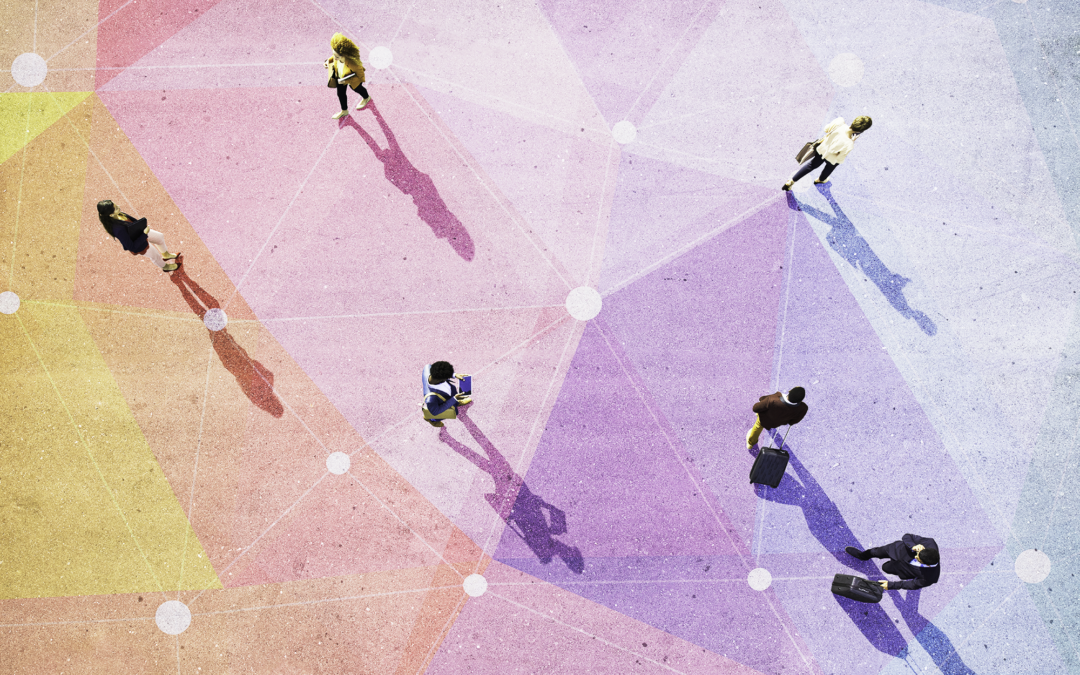There was a day when I thought the vulnerable were other people, not me. That thought has gone as we face the reality of Covid co-existing in our communities for the foreseeable future. We are all vulnerable. Vulnerable to the shifts happening around us: global economies, global warming, global unseen germs. In this super connected world in which we live, our sense of control and confidence is rapidly declining. According to The Conference Board, in April the US consumer confidence index stands at 86.9 down from 118.8 in March. The world was already changing. Now it’s changing at warp speed.
Recent studies show:
– In April, EY’s Future Consumer Index found 42% of consumers believe the way they shop will fundamentally change. Even making personal data available to help in monitoring and tracking an infection disaster is agreeable with 53% of consumers.
– An emerging gap. While 52% of US online adults prefer to buy from companies that show how they are protecting customers, only 24% of US adults trust that companies are in fact putting their health and well-being first (Forrester).
So how do we navigate this new world with rapidly evolving new norms?
Think about your trip to the local grocery store and how that has changed. Mine has shifted from being a welcome distraction during the early days of confinement, to now one of more genuine fear for being in a hotspot where I could contract the virus. In addition to wearing gloves and a mask, I attack the shopping cart with disinfectant spray before heading for the queue where I wait patiently to be let in by a store assistant managing the flow of shoppers into the store. Combined, this new ritual offers a degree of psychological reassurance. It is a minor antidote to the feeling of vulnerability that swells up inside me as I step outside the home and try to re-establish regular routines.
The feeling of vulnerability and anxiety is real. My heartbeat increases and my palms become sweaty knowing our new state of living is with the virus. As I move to familiar stores, I find myself consciously looking for signals that they have adapted to the new reality. Do I see social distancing measures implemented? Are customers and assistants wearing masks? Is the hand sanitizer readily available? Is customer flow being managed? The quicker I can mentally tick the boxes, my feeling of vulnerability is reduced, the less anxious I become and the safer I feel.
Pharmacies and grocery stores have been at the front of this real-time prototyping revolution. Necessity is the mother of invention after all. Plexi-glass structures, mounted hand sanitizers and ductape floor markers are just some of the new features that have all been hastily implemented. These interventions don’t come from any central office or enduring corporate guidelines. They are functional, mechanical, almost brutal. They are what could be called ‘first generation’ prototypes. But they work. They implement the requirements and have become the ‘signals’ that we now associate for ‘personal protection’ of both staff and customers. These businesses have been forced to rethink how they operate to provide safety, both physical and emotional. This change is not a temporary one. It is emerging as the new normal in a hyper connected world.
Every Business will need to embrace change and fundamentally rethink their model. There is a new currency emerging, the currency of trust…trust that you are designing your products, services and experiences in a way that keeps me and my family, as well as your employees, safe in this vulnerable world. And it will be fundamental to survival.
So what is trust? Harvard Business Professor Frances Frei, outlines the three core components of trust: Authenticity, Logic/Rigor and Empathy. Like the three-legged stool, all must be in balance.
1. Logic/Rigor is doing what you say you will do, reliably over time. This is well understood by businesses as being core to attracting and retaining customers. Or they don’t last long.
2. Authenticity is presenting a transparent and consistent picture of who your company and your employees are. No secrets or hidden risks. In the digital age, the ability and commitment to authenticity has grown.
3. The third factor, Empathy, is perhaps the hardest lever in trust. How companies demonstrate empathy for their customers and employees is a critical factor in a post-Covid-19 world and it challenges us to see our world differently. Empathy is not about your own needs but for those you serve as provider, whether that be as employer or producer.
Trust has been morphing for a while in unexpected ways. Institutional trust is declining and yet distributed trust to “unknown, but known agents” has grown. Isn’t it interesting how willing society is to get in an unmarked car with an unknown driver using a digital app? Uber’s success challenges the trust and vulnerability truths to which we have long subscribed. By design. Uber has built signals into their experience that reinforce “you are safe” and “you can trust us” by sending a picture of the driver, including make/model/license of the car, etc. Even Uber now must step up its game. They will need to reassure me how they are protecting me and keeping me safe whilst I am in their service including from the passenger who travelled before me. These will be conscious design choices that done well will allay anxiety.
So what does this mean for your business?
Firstly, this challenge is universal. It affects every business; from coffee shops to airlines, from hotels to healthcare. There is a new and emerging standard of excellence for the design of products and services is based on understanding the physical and emotional vulnerabilities of core consumers. Early movers will be rewarded as consumer sentiments move rapidly to this future state. Done well, brand owners will build a new currency of trust leading to more authentic relationships that will endure over time.
Designing for the physical and emotional vulnerabilities of consumers will require business leaders to champion human centered innovation, a process of innovation driven by understanding the emotional and physical needs and desires of stakeholders, both customers and employees. Used by Fortune500 companies and taught at business schools the core activities include;
• Empathy. The ability to walk in the shoes of others and see the world through their eyes. In depth qualitative research will reveal true insights about how consumer vulnerabilities relate to your business.
• Framing. The intentional framing of opportunities that explore a spectrum of possibilities.
• Ideation. The translation of opportunities into tangible ideas that express solutions.
• Rapid prototyping. The ‘good enough’ articulation of an idea (aka MVP) to gain feedback from your core consumer.
• Learning and iteration. Practicing active listening will help understand what resonates and what doesn’t.
Iteration to enhance customer confidence and trust has already begun on the front lines of retail but it is clunky, rudimentary, and insufficient. Organizations need to consider the entire human centered approach to build a sustainable advantage. In addition to safety at the sale, is there trust in the safety of the process? In the US, Dominos Pizza seems to be at the forefront touting their no touch process after the pizza has cooked at 450degrees. Check out how they are talking about this to their potential customers: https://www.youtube.com/watch?v=W1QsgAa2Fwo and https://www.youtube.com/watch?v=LZWG008ZaBI
As a business leader you understand the importance of the customer journey and how it can be a competitive differentiator. It is why the purpose, look, tone, feel of products and services throughout the journey have received so much focus over the past decade. Now you will have to refine and enhance your customer experience to meet the needs of Covid. How will you build confidence and trust in your customers that you are keeping me and my family, as well as you and your employees, safe in this vulnerable, connected global community in which we live?
Ask yourself these 3 questions;
1. How well do you understand the user experience journey of your core customers and stakeholders?
2. How effective are the measures in meeting both the functional and emotional needs of core users through the user experience?
3. How is the quality of implementation of measures affecting your experience?
Over the next few weeks we will begin exploring what ‘Design for Social Anxiety’ means for a Covid world and what we can learn (and reapply) from brands that are leading in building a new currency of trust.
Cindy Tripp & Duncan Paul
Take Action
1) Watch Professor Frei’s Ted Talk on Trust:
https://www.ted.com/talks/frances_frei_how_to_build_and_rebuild_trust
2) Watch Rachel Botsman Ted Talk on Trusting Strangers:
https://www.ted.com/talks/rachel_botsman_we_ve_stopped_trusting_institutions_and_started_trusting_strangers
3) Reach out to Cindy or Duncan if you need help starting on this journey.
Cindy@cindytripp.com Duncan@hellocreativity.ch


